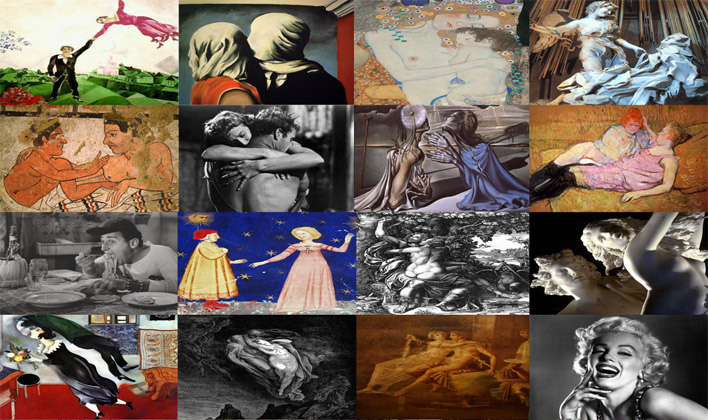Lady Macbeth and Us. Power, Body and Desire
Abstract
Aim of the study is to analyze some traits of the women’s identity as they emerge during the Early modern age. The analysis is focused on some passages from Macbeth, the Shakespeare’s play, related to the metamorfical and absolute (both feminine and masculine) figure of Lady Macbeth. The study proceeds in the analysis going through the close reading and to the psychoanalitic interpretation and, besides, to the hystorical reconstrution of the visibile figures (especially Elizabeth I), which have inspired the Lady Macbeth’s figure and her crossing the genders
Downloads
References
Adelman, Janet, “Escaping the Matrix: the Construction of Masculinity in Macbeth and Coriolanus”, Ead., Suffocating Mother: Fantasies of Maternal Origins in Shakespeare’s Plays, New York-London, Routledge, 1992: 130-164.
Corti, Claudia, «Macbeth». La parola e l'immagine, Pisa, Pacini, 1983.
Foucault, Michel, La volontà di sapere. Storia della sessualità I, Milano, Feltrinelli, 1988.
Fox, Alice, “Obstetrics and Ginecology in Macbeth”, Shakespeare Studies, 12 (1979): 127-141.
Freud, Sigmund, “Alcuni tipi di carattere tratti dal lavoro psicoanalitico”(1916), Id., Opere, Torino, Bollati Boringhieri, 2003: 625-632.
Frye, Susan, Elizabeth I: the Competition for Representation, Oxford, Oxford U. P., 1993.
Fusini, Nadia, “È un pugnale che vedo? Atto quinto: Macbeth, la paura”, Di vita si muore. Lo spettacolo delle passioni nel teatro di Shakespeare, Milano, Mondadori, 2010: 357-450.
Kantorowicz, Ernst H., I due corpi del re. L’idea di regalità nella teologia politica medievale, Torino, Einaudi, 1989.
King, Margaret L., Women of the Renaissance, Chicago, Chicago U. P., 1991.
Klein, Melanie, Invidia e gratitudine, Firenze, Giunti, 2012.
Knight, George Wilson, The Imperial Theme: Further Interpretations of Shakespeare’s Tragedies Including the Roman Plays, London, Methuen & co., 1961.
La Belle, Jenijoy, “A Strange Infirmity: Lady Macbeth’s Amenorrea”, Shakespeare Quaterly, 31.3 (1980): 381-386.
Lacan, Jacques, “La direzione della cura e i principi del suo potere”, Id., Scritti, Torino, Einaudi, 1974: 580-642.
Marcus, Leah S. – Muller, Janel – Rose, Mary B. (eds.), Elizabeth I: Collected works, Chicago and London, The University of Chicago Press, 2000.
Mead, Margaret, Sesso e temperamento, Milano, Il Saggiatore, 2005.
Mucci, Clara, “Introduzione”, Ead., Liminal personae. Marginalità e sovversione nel teatro elisabettiano e giacomiano, Napoli, Esi, 1995: 3-40.
Mucci, Clara, I corpi di Elisabetta. Sessualità, potere e poetica della cultura al tempo di Shakespeare, Pisa, Pacini, 2009.
Nekrosius, Eimuntas, «Macbeth» per me, programma di sala, 1999.
Neumann, Erich, La grande madre. Fenomenologia delle configurazioni femminili dell’inconscio, Roma, Astrolabio, 1981.
Orgel, Sthephen, Impersonations. The Performance of Gender in Shakespeare’s England, Cambridge, Cambridge U. P., 1996.
Pagani, Caroline, “Il Macbeth immaginato da Eimuntas Nekrosius. Ut pictura theatrum”, Tess, 2 (2002): 5-17.
Pattis, Eva, Aborto perdita e rinnovamento. Un paradosso dell’identità femminile, Novara, Red, 1995.
Rackin, Phyllis, Shakespeare and Women, Oxford, Oxford U. P., 2005.
Rocco Longo, Marinella, “In difesa di Lady Macbeth”, Le forme del teatro, Eds. Giorgio Melchiori – Viola Papetti – Nancy Isemberg, Edizioni di Storia e Letteratura, vol. VII, 2003: 130-167.
Shakespeare, William, Macbeth, trad. it. di Agostino Lombardo, Milano, Feltrinelli, 2012.
Strong, Roy, Gloriana: the Portraits of Queen Elizabeth I, London, Thames & Hudson, 1987.
Tempera, Mariangela, “Lo spazio simbolico delle weird sisters”, «Macbeth» dal testo alla scena, Ed. Mariangela Tempera, Bologna, Clueb, 1982: 77-89.
Traub, Valerie, “Gender and Sexuality in Shakespeare”, The Cambridge Companion to Shakepseare, Eds. Margreta De Grazia – Stanley Wells, Cambridge, Cambridge U. P., 2001: 129-146.
Turner, Victor, The Ritual Process: Structure and Antistructure, New York, Ithaca, 1969.
Valcarenghi, Marina, L’aggressività femminile, Milano, Mondadori, 2003.
Copyright Notice
You are free to copy, distribute and transmit the work, and to adapt the work. You must attribute the work in the manner specified by the author or licensor (but not in any way that suggests that they endorse you or your use of the work).









